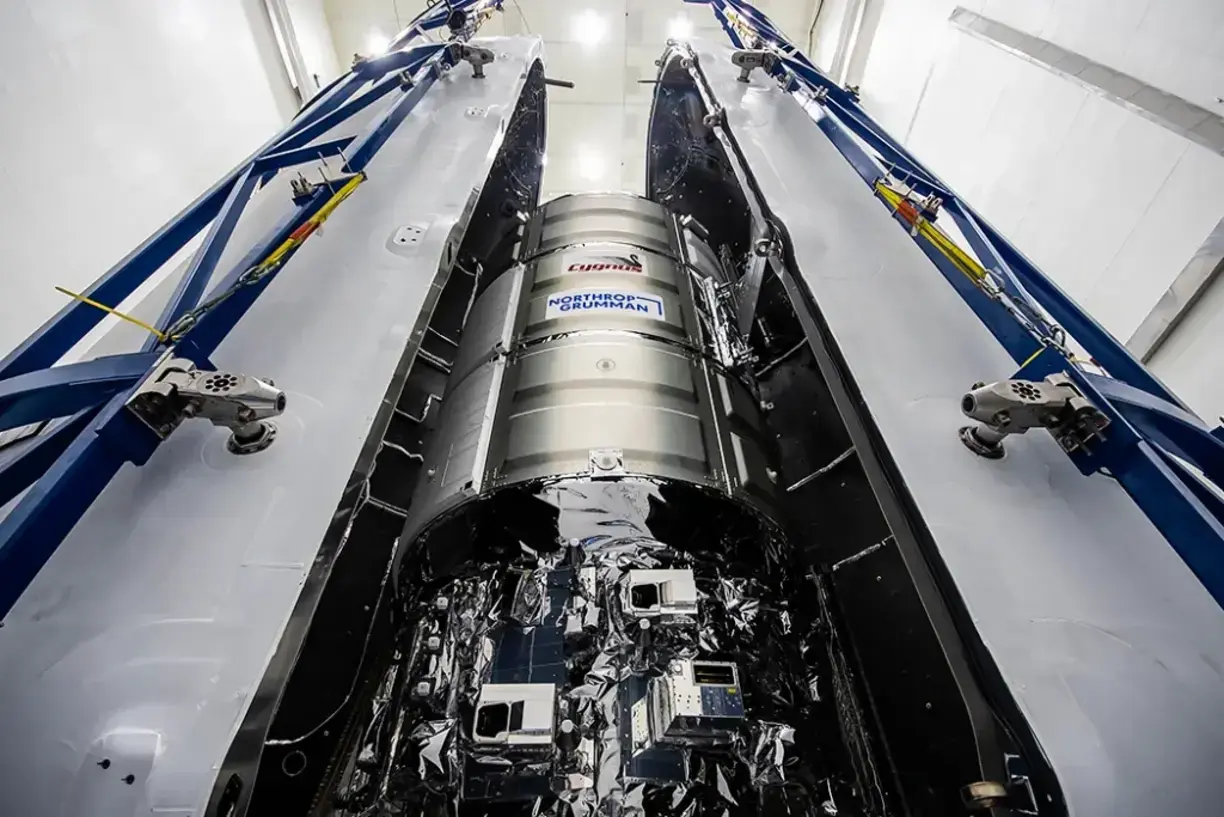Cygnus ready for first launch aboard Falcon 9
- January 28, 2024
- 0
The Cygnus cargo spacecraft is about to be launched on a Falcon 9 rocket for the first time; this combination required more modifications to the rocket than to
The Cygnus cargo spacecraft is about to be launched on a Falcon 9 rocket for the first time; this combination required more modifications to the rocket than to

The Cygnus cargo spacecraft is about to be launched on a Falcon 9 rocket for the first time; this combination required more modifications to the rocket than to the spacecraft. NASA announced at its Jan. 26 briefing that it plans to launch the NG-20 cargo mission from Space Launch Complex 40 at Cape Canaveral at 12:07 a.m. ET on Jan. 30. This is a one-day departure from previous plans to “ensure launch pad readiness,” the agency said. If Cygnus launches that day, it will reach the International Space Station early on February 1.
This launch marks the first flight of Northrop Grumman’s Cygnus cargo spacecraft on the Falcon 9. With the exception of two missions launched aboard United Launch Alliance’s Atlas 5 following the failed Antares launch in 2014, all previous Cygnus launches have been conducted aboard Northrop’s own Antares launch vehicle. year.
Northrop plans to launch at least three Cygnus missions on Falcon 9 rockets by working with Firefly Aerospace on a new version of Antares, swapping the Ukrainian first stage with Russian engines for a Firefly-designed stage that uses its own engines. This vehicle, the Antares 330, is planned to be launched in mid-2025.
The transition to Falcon 9 has been relatively smooth for Northrop. “We didn’t have to make any changes to Cygnus,” Cyrus Dalla, Northrop Grumman’s vice president and general manager of tactical space systems, said during the briefing. The company made minor changes to its announced process, with cargo loading being done in a new facility with different equipment.
He added that changing the launch vehicles does not change Cygnus’ capabilities. The NG-20 mission will carry just over 3,700 kilograms of cargo, in line with the current version of the vehicle.
But SpaceX had to make changes to accommodate Cygnus, including the ability to “lazy load” cargo within 24 hours of launch. Antares has an opening in the top of the rocket’s payload fairing that provides access to the interior of Cygnus to load the payload after encapsulating the spacecraft.
To provide a similar late-loading capability for Falcon 9 Cygnus launches, SpaceX created a 1.5-by-1.2 door in the Falcon 9’s fairing that Bill Gerstenmeier, SpaceX’s vice president of assembly and flight reliability, calls a “gigagate.” There are meters of space on the side of the bonnet, which can be opened to provide environmentally controlled access to the interior of the Cygnus.
“This is the first time we’re going to do this,” he said as SpaceX’s own Dragon spacecraft launched without the fairing. “It took a lot of changes on our end to get this equipment ready for use.” He added that placing the door in the payload fairing did not affect SpaceX’s ability to recover and reuse it.
“We really appreciate how SpaceX worked with us to ensure cargo flow and integration, and we were able to reuse many of our procedures,” Dalla said.
In addition to developing the payload fairing gate for Cygnus launches, SpaceX is also testing modifications to its carrier combiner at Launch Complex 39A that allow for liquid methane and oxygen loading. This is necessary for the imminent launch of Intuitive Machines’ IM-1 lunar lander; This vehicle will be refueled in the field, in the payload fairing, shortly before launch.
Gerstenmaier said SpaceX is testing equipment to make sure it’s ready for the IM-1 launch, currently scheduled for mid-February. “This work is very much ongoing,” he said. “It’s a very interesting integration, but as you can see, even with the Northrop Grumman 20 mission, we at SpaceX like to do innovative and creative things.”
Source: Port Altele
As an experienced journalist and author, Mary has been reporting on the latest news and trends for over 5 years. With a passion for uncovering the stories behind the headlines, Mary has earned a reputation as a trusted voice in the world of journalism. Her writing style is insightful, engaging and thought-provoking, as she takes a deep dive into the most pressing issues of our time.